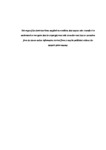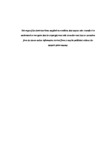Ecological studies of the South Atlantic deep sea to inform sustainable management
| dc.contributor.supervisor | Howell, Kerry | |
| dc.contributor.author | Bridges, Amelia Elizabeth Henrietta | |
| dc.contributor.other | School of Biological and Marine Sciences | en_US |
| dc.date.accessioned | 2022-01-11T12:04:43Z | |
| dc.date.issued | 2022 | |
| dc.identifier | 10433227 | en_US |
| dc.identifier.uri | http://hdl.handle.net/10026.1/18542 | |
| dc.description | Work from Chapter 3 was included in the publication: Bell et al. 2021. Life history and ecology of bluenose warehou (Hyperoglyphe antarctica, Centrolophidae) in the southern Atlantic. Frontiers in Marine Science, 8, doi.org/10.3389/fmars.2021.610172 Chapter 3 is published in with Frontiers in Marine Science “Working Towards a Blue Future: Promoting Sustainability, Environmental Protection and Marine Management: Examples from the UK Government Blue Belt Programme and Current International Initiatives” Research Topic: Bridges, A.E., Barnes, D.K., Bell, J.B., Ross, R.E. and Howell, K.L., 2021. Benthic assemblage composition of South Atlantic seamounts. Frontiers in Marine Science, 8, doi.org/10.3389/fmars.2021.660648 | en_US |
| dc.description.abstract |
Although deep-sea science continues to progress, the southern hemisphere represents a vast and yet understudied area, and the South Atlantic is no exception to this. However, as with other ocean basins, blue growth and the potential for expansion of new and emerging industries mean that information is required to characterise the ecology of the basin to inform sustainable management. Furthermore, novel tools will be required to assist in translating ecological knowledge into usable products that can facilitate marine spatial planning. The aims of this thesis were to contribute to our understanding of the benthic ecology of seamount and oceanic island ecosystems in the South Atlantic, and to trial new methodologies for the development of tools to facilitate sustainable management of the deep sea. The results of this thesis show that productivity and substrate hardness are both significant drivers of α-diversity on seamount and oceanic island ecosystems, manifesting in significantly higher α-diversity in temperate latitudes. Interestingly, no consistent relationship between α-diversity and depth was identified, upon further exploration, significant bathymetric β-diversity (turnover) gradients were identified. Further developing our ecological understanding of the basin, similarities and dissimilarities in community structure across the South Atlantic were explored, again linking ecological distributions with environmental parameters. Significant differences between deep-sea communities from temperate and tropical latitudes were identified, with latitude and depth considered the key environmental drivers of community composition. Vulnerable Marine Ecosystems (VMEs) were identified in both tropical and temperate latitudes, often displaying strong similarities to faunal assemblages described in the North Atlantic. These findings suggest that South Atlantic seamounts and oceanic islands may harbour significant abundance and diversity of deep-sea species and assemblages including those protected through various legal instruments. This thesis also addresses how to appropriately inform sustainable management of data-poor ocean basins in multiple ways: the first explores the use of a model transfer approach across a data gradient from rich to poor and ascertains the ecological relevance of modelled predictions through independent validation using data from the South Atlantic. The second uses ecological variables known to drive species distributions to develop a global habitat classification. The final output is evaluated against faunal zonation literature and other modelled outputs, considering both our current understanding of drivers of global species and habitat distribution, and the drivers and distributions identified within this thesis for the South Atlantic. | en_US |
| dc.description.sponsorship | University of Plymouth | en_US |
| dc.description.sponsorship | Centre for Environment, Fisheries and Aquaculture | en_US |
| dc.description.sponsorship | Uk Foreign and Commonwealth Development Office "Blue Belt" Programme | en_US |
| dc.description.sponsorship | British Antarctic Survey National Capability Programme | en_US |
| dc.language.iso | en | |
| dc.publisher | University of Plymouth | |
| dc.rights | Attribution-NoDerivs 3.0 United States | * |
| dc.rights.uri | http://creativecommons.org/licenses/by-nd/3.0/us/ | * |
| dc.subject | Deep-sea Ecology | en_US |
| dc.subject | Marine Spatial Planning | en_US |
| dc.subject | Sustainable Management | en_US |
| dc.subject | Marine Conservation | en_US |
| dc.subject.classification | PhD | en_US |
| dc.title | Ecological studies of the South Atlantic deep sea to inform sustainable management | en_US |
| dc.type | Thesis | |
| plymouth.version | non-publishable | en_US |
| dc.identifier.doi | http://dx.doi.org/10.24382/895 | |
| dc.identifier.doi | http://dx.doi.org/10.24382/895 | |
| dc.type.qualification | Doctorate | en_US |
| rioxxterms.version | NA | |
| plymouth.orcid.id | 0000-0002-1422-9637 | en_US |
Files in this item
This item appears in the following Collection(s)
-
01 Research Theses Main Collection
Research Theses Main




